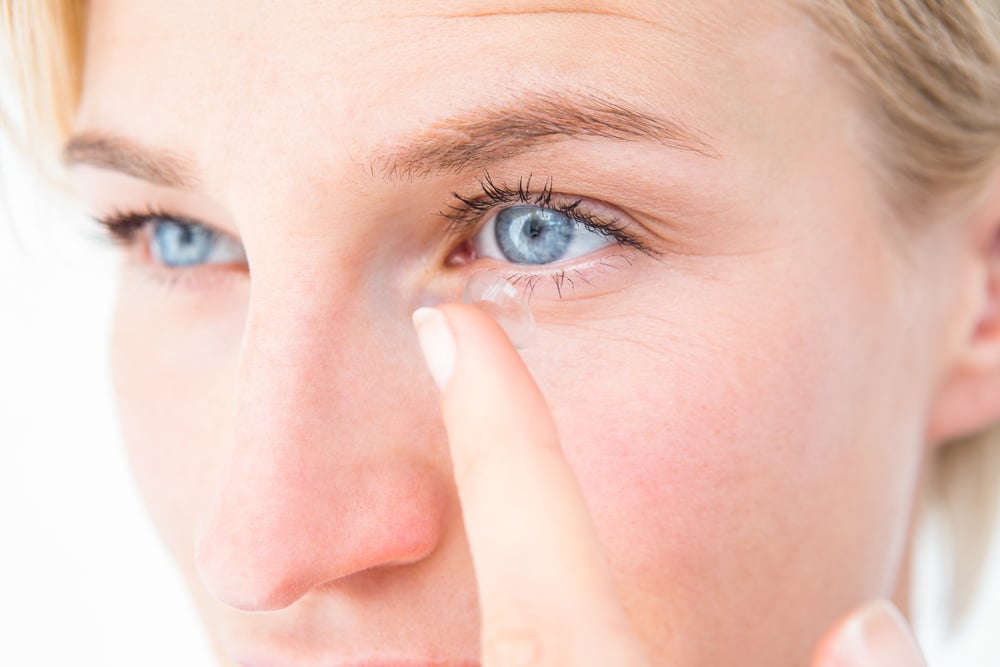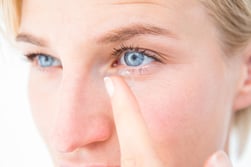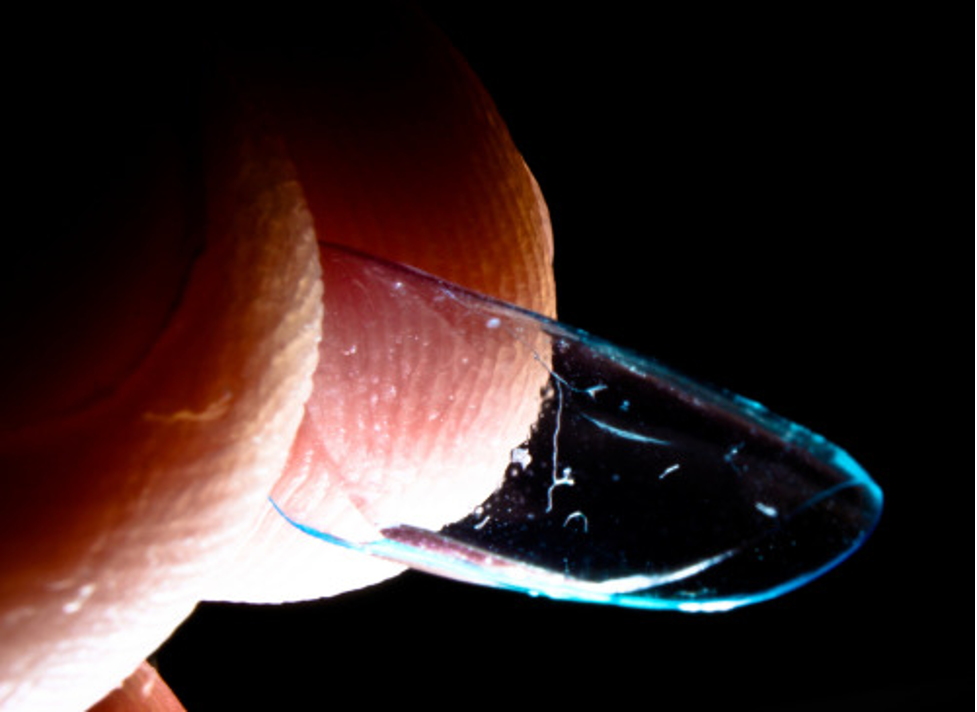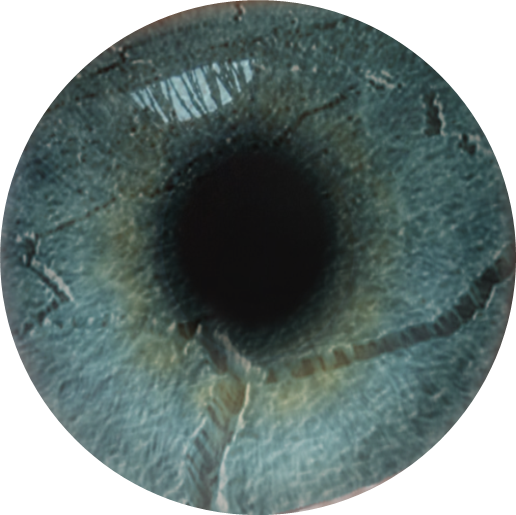Caring for Contacts
One of our specialties at Rochester Eye and Laser Center is prescribing and fitting patients for contact lenses, which can provide improved vision...


For those who wear contact lenses, the most uncomfortable pairs are often the first and the last. The initial pair can be painful due to a lack of experience in handling them, while the final pair might cause discomfort because of a condition known as contact lens overwear syndrome (CLOS).
The Centers for Disease Control and Prevention (CDC) reports that around 41 million people in the United States use contact lenses, and many of them will face eye issues from prolonged use at some point. This article aims to explain what contact lens overwear syndrome is, identify its symptoms, and explore treatment and prevention options.
Contact lens overwear syndrome occurs when contact lenses are worn longer than recommended, leading to potential health issues. To understand this condition, it's important to know how contact lenses interact with the eye and the eye's specific characteristics that can contribute to overwear syndrome. Unlike other parts of the body, the cornea lacks blood vessels to supply oxygen. Instead, it receives oxygen directly from the air. Properly fitted, clean, and new contact lenses are designed to rest on the tear film covering the cornea, allowing oxygen to pass through the lens material to keep the eyes healthy. However, wearing contact lenses for extended periods can lead to contamination and block oxygen flow to the eye. This can result in damage to the corneal epithelium, the clear layer protecting the eye from infection. Symptoms such as redness, eye pain, blurred vision, dry eyes, and other discomforts may occur when this happens.
The initial and most crucial step in addressing contact lens overwear is to promptly remove the contact lenses from your eyes. This action allows your eyes to rest and recover from any strain or irritation caused by prolonged lens wear. It is essential to refrain from using contact lenses until you have consulted with your eye doctor, who will assess your eye health and provide guidance on when it is safe to resume wearing them.
During this period of rest, if you experience mild irritation, your ophthalmologist may recommend the use of soothing eye drops. These drops are designed to alleviate discomfort and promote healing by moisturizing the eyes and reducing inflammation. Additionally, your eye doctor might suggest treatments that encourage your eyes to naturally produce high-quality tears, which are vital for maintaining eye health and comfort. This comprehensive approach ensures that your eyes have the opportunity to heal properly and reduces the risk of further complications associated with contact lens overwear.
In severe instances, contact lens overwear syndrome can signal a serious infection or injury that might lead to permanent eye damage, including blindness. Any degree of blurriness or eye pain should be promptly evaluated and treated by an eye specialist to prevent symptoms from worsening.
The best way to avoid irritation from contact lenses is to prevent it from happening in the first place. To keep this potentially harmful condition at bay, adhere to the contact lens usage guidelines provided by your eye doctor and the lens manufacturer, such as:
To significantly reduce the risks associated with contact lens overwear, consider switching back to glasses permanently or explore if you are a candidate for permanent vision correction through LASIK or other modern alternatives.
Long-term contact lens users may experience contact lens overwear syndrome, also known as contact lens intolerance (CLI). Extended use of contact lenses can cause lens damage or bacterial accumulation, leading to reduced oxygen supply to the cornea and potentially triggering an immune response each time the lens is worn. Additionally, sensitivity to the lens materials or cleaning solutions can also cause this condition. Your ophthalmologist can typically identify the issue quickly, allowing you to receive the necessary treatment. Be sure to remove your contact lenses immediately and bring them to your appointment to assist your eye doctor in making a diagnosis.
If caught in a timely fashion, contact lens overwear syndrome can be treated by discontinuing contact lens use (switching back to your eyeglass prescription) and using soothing prescription eye drops. In serious cases, treatment may involve topical antibiotics, corticosteroid eye drops, or even surgery.
Eye irritation, redness, pain, and inflammation are not normal and should never be ignored. If you suspect contact lens overwear – or have any unusual symptoms – remove your contact lenses and make an appointment with your eye doctor. An ophthalmologist can confirm or dispel a diagnosis of lens intolerance and determine what caused symptoms in the first place. Symptoms of contact lens intolerance can worsen and lead to more severe and vision-threatening complications.
Long-term use of contact lenses can cause changes in the corneal epithelium, or even lead to the formation of micro cysts. Decreased corneal sensitivity and even vision loss can also occur. Most of these changes are only temporary if contact lens use is discontinued and symptoms are treated.
In most cases, discomfort from contact lenses is caused by overuse, improper lens care and other poor contact lens hygiene:
Consult your eye doctor for a contact lens replacement if you have engaged in any of these behaviors. He or she will provide quality contact lenses and give you advice on how to properly care for contact lenses. These are the first and most important steps toward avoiding contact lens complications.
Healing from contact lens intolerance depends on the level of damage incurred from overwearing contact lenses. Eyes are resilient and corneas can heal in a matter of days with treatment and rest, as long as patients experiencing symptoms follow an eye doctor’s treatment plan.
Treatment may include reducing your contact lens wearing time, a topical steroid, or addressing storage and cleaning issues.
Eye redness, dryness, blurred vision, a foreign body sensation, and excessive or absent tear flow are just some of the symptoms of contact lens overwear syndrome or contact lens intolerance. Patients who experience a sudden onset of symptoms after inserting contact lenses should confirm this possible diagnosis with an eye doctor.
This condition is called contact lens overwear syndrome (CLOS) or contact lens intolerance (CLI). It may seem sudden, buts the odds are it’s been brewing for a long time. CLOS/CLI happens when the eye rejects the lens as a foreign body after overexposure to the lens or lens contamination.
Yes. The cornea is the only part of the body that takes oxygen directly from the air, rather than indirectly via the lungs. So, contact lenses are designed to allow the necessary amount of oxygen to permeate the lens; however, bacteria, oils and dirt can block oxygen flow when contact lenses are worn for too long.
It’s a good idea to give your eyes a break once in a while by leaving out your contact lenses overnight and wearing eyeglasses instead of contact lenses once in a while. A two-week break from contact lenses is usually adequate to give your delicate corneas a reset.
If you have an indication that contact lens intolerance could become a recurring problem, switch back to glasses and make an appointment with an eye care professional. An eye doctor can prescribe healing treatment and give you other tools to keep eyes comfortable.
Contact lens overwear syndrome is just one complication that can occur when contact lenses are worn for too long. Other potential contact lens complications include giant papillary conjunctivitis, corneal edema, distortion, corneal ulcer and more, all of which contribute to greatly increased risks of vision loss.
Giant papillary conjunctivitis is a condition in which small bumps (papillae) form under the eyelid, usually the result of an allergic reaction to the contact lenses themselves. With corneal edema, injury or allergies cause the cornea to swell with fluid. These conditions – along with corneal distortion, ulcers and sores – occur more often with contact lens overuse and can be painful.
Any acute or chronic eye pain, vision disturbance or change in appearance should be taken seriously to protect the delicate eyes from permanent damage. Stop wearing contact lenses and immediately make an appointment with an ophthalmologist if you notice anything unusual with your eyes, including:
With your contact lens wear suspended, you can focus on healing and reassessing whether you return to the same lens type or consider new lens materials. Often daily disposable lenses and soft contact lenses with better oxygen permeability are good options.
Today’s lens technology may require less time for successful contact lens care. However, your ophthalmologist can guide you on what lens types are best to help you keep contact lens overwear syndrome from recurring.
Any contact lens that’s worn for an excessive period of time, or longer than recommended, can lead to lens wear complications, such as injury or infection. Most people can tolerate wearing contact lenses for up to 16 hours per day. Never wear contact lenses while sleeping.
For extended-wear contact lenses, the FDA recommends removing and cleaning lenses at least once a week. The maximum recommended time for continuous wear is 30 days. Never wear lenses for more than the wear time for which they were designed (for example, never use daily or weekly contact lenses as extended wear lenses).
If you’re considering LASIK, take a moment for a quick self-test to see if you might be a candidate for LASIK.

One of our specialties at Rochester Eye and Laser Center is prescribing and fitting patients for contact lenses, which can provide improved vision...

Do the following while inserting and wearing contact lenses Always wash and rinse your hands thoroughly before handling your lenses or touching...

Are you tired of the constraints of wearing glasses and contact lenses? You may have already thought about whether you would be a good LASIK...